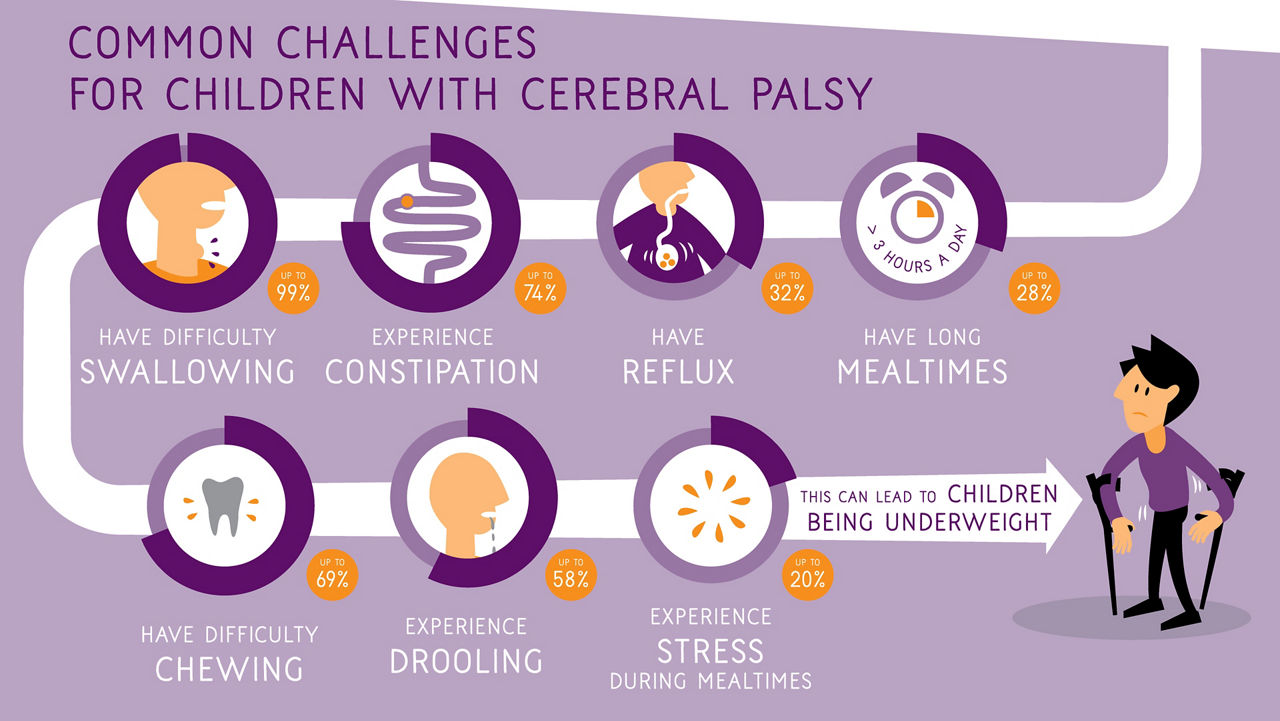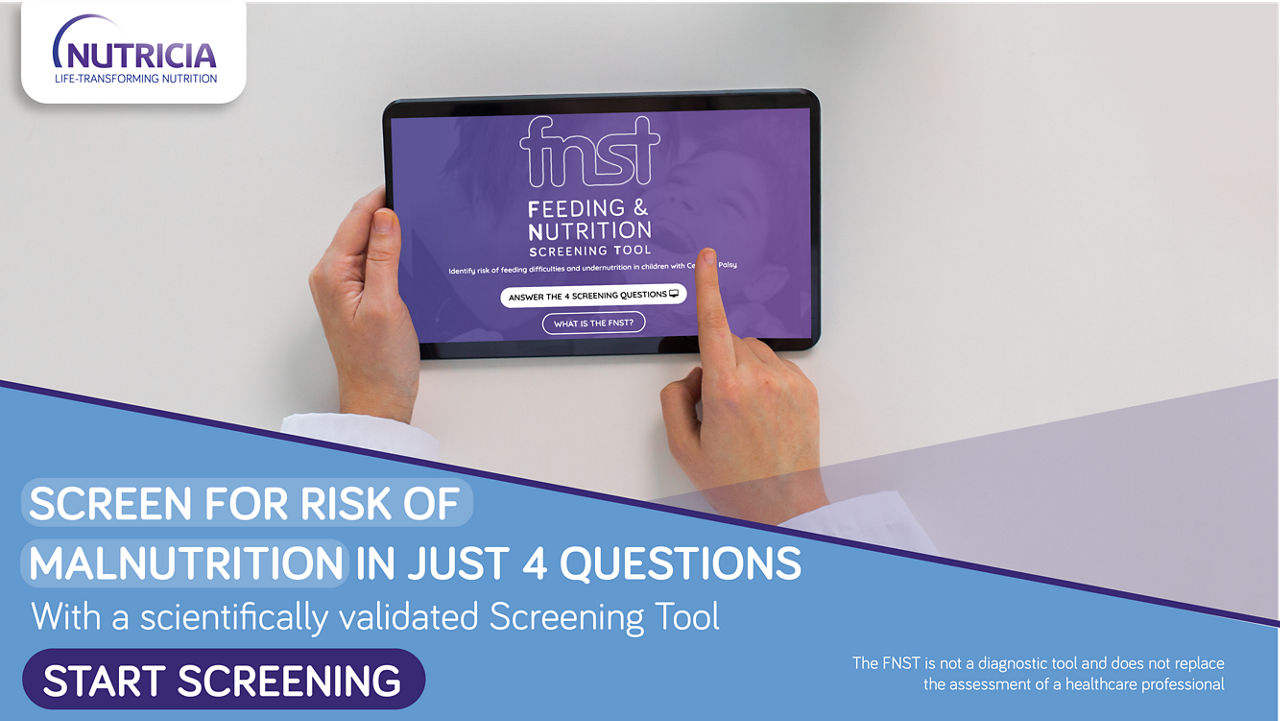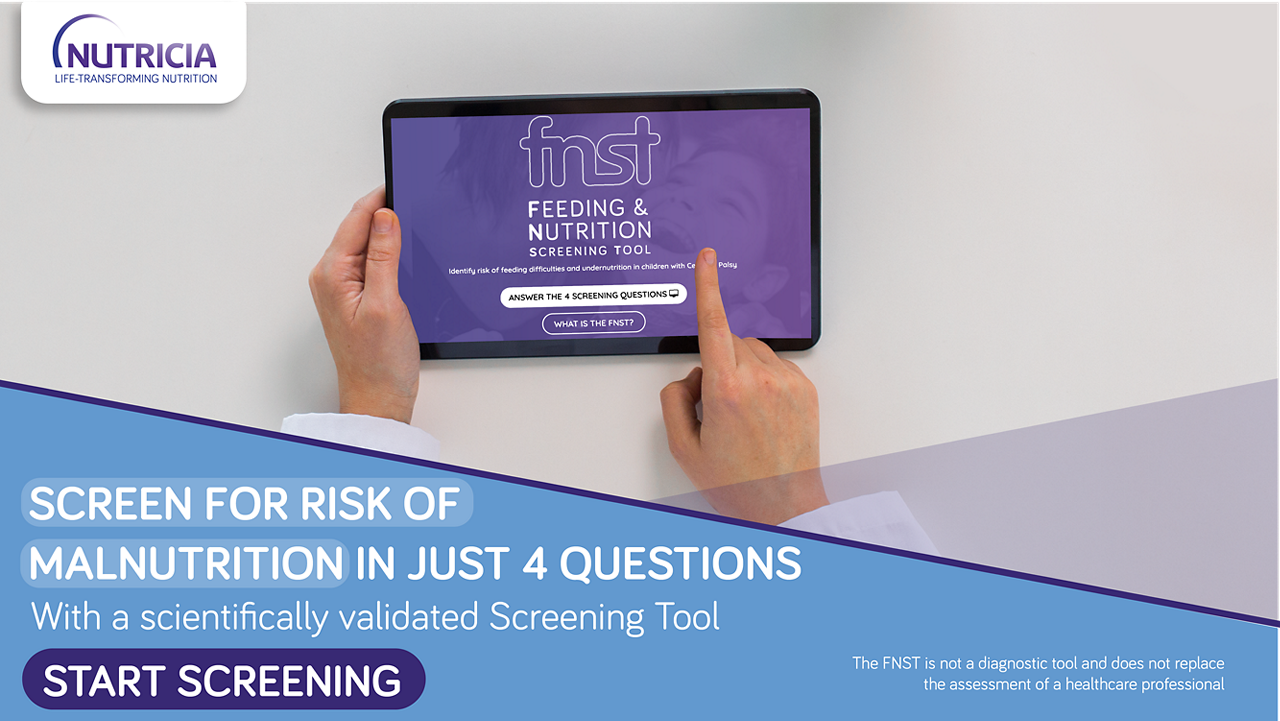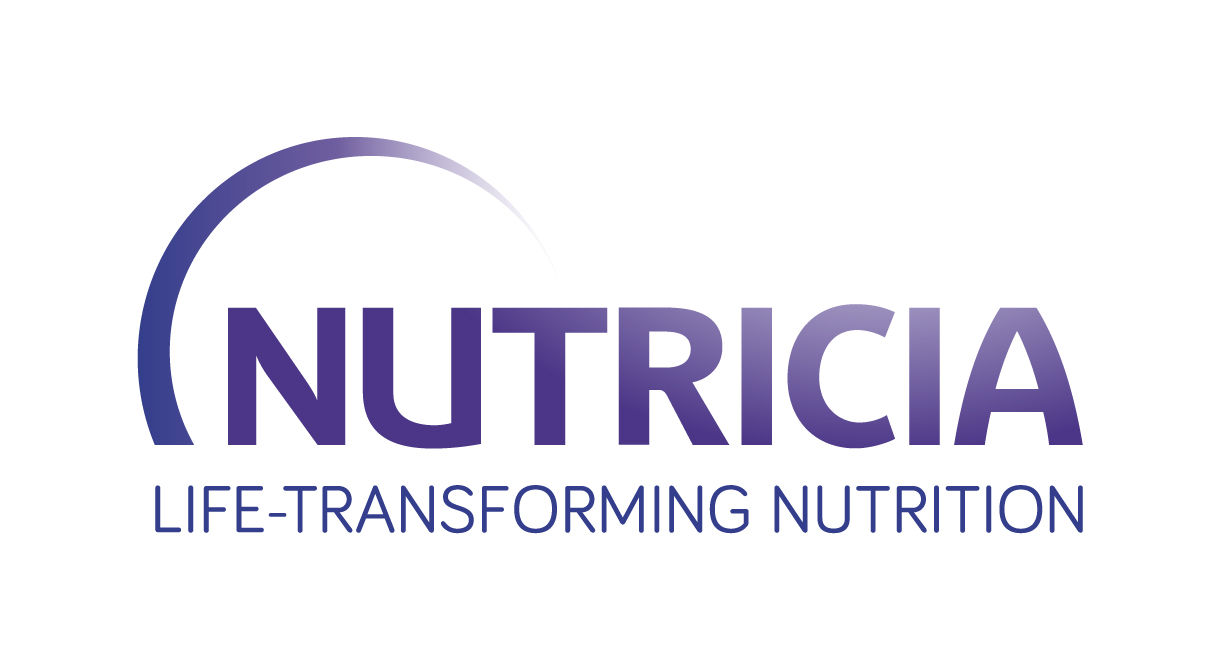Cerebral palsy is caused by damage to the brain before, during, or shortly after birth. The damage may occur for many different reasons – for example, an infection in either mother or baby, or complications during birth resulting in reduced blood and oxygen supply to the baby’s brain3.
Feeding difficulties in children with cerebral palsy: why they matter and how to recognize them
Children with cerebral palsy often have difficulties with feeding and swallowing. These can cause children to become underweight and undernourished, with consequences for growth and development1,2. A new tool can help parents screen for risk of feeding/swallowing difficulties and undernutrition quickly and easily, so they know when to seek medical help.
What is cerebral palsy?
Cerebral palsy is a group of disorders that affects a person’s movement, posture, and balance. Cerebral palsy is one of the most common childhood disabilities, affecting 2–3 out of every 1000 babies born worldwide3.

Causes and symptoms of cerebral palsy
Cerebral palsy is typically detected in infants aged between 12 and 24 months. Early signs may include infants being slower to learn skills such as rolling over, sitting up, standing, and walking. If symptoms are mild, cerebral palsy may not be discovered until later in childhood3.
Cerebral palsy causes lifelong problems with movement, posture, and balance. Typical symptoms of cerebral palsy include poor muscle co-ordination, exaggerated reflexes, stiffness, weakness, and difficulties when speaking, eating and swallowing3.
The severity of these symptoms varies from person to person. Some children with cerebral palsy can walk independently and manage daily activities without help; others will need a wheelchair, tube-feeding, and lifelong specialist care3.
Feeding and swallowing difficulties in cerebral palsy
For parents, learning that your child has been diagnosed with cerebral palsy can be daunting and hard to process. Your child may have complex medical issues that will need ongoing specialist care. You will also need to learn how to support your child at home. Ensuring that your child eats and drinks enough is a daily task for all parents – but for children with cerebral palsy, this can present multiple challenges.

Feeding and swallowing difficulties are very common in cerebral palsy4. This is because children with cerebral palsy frequently have damage to the parts of the brain that control eating and swallowing5.
Children with cerebral palsy may experience reflux, vomiting, and drooling4,5. They may also develop aspiration, whereby food or liquid enters the airways, potentially leading to lung infections4. Some children may be unable to swallow safely and require tube-feeding4.
Feeding and swallowing difficulties can make for long and stressful mealtimes4. The resulting reduction in macro- and micronutrient intake can negatively affect children’s growth and development, with consequences for long-term health4.
Why do feeding difficulties matter?
All children need to eat a healthy diet, packed with good nutrition. This is essential for them to be able to reach their full potential for growth and development.
A child who is unable to get enough of the right nutrients (for example, some children with cerebral palsy), may become underweight and undernourished4. This can adversely affect their physical and mental development and increase their risk for other health problems, such as infections and a slower recovery following illness.
To avoid these negative consequences and help children with cerebral palsy to reach their full potential, it is important to identify feeding difficulties early. This will allow children to be evaluated by specialists and to receive support, such as medical nutrition, if needed4. However nutritional support may be overlooked. You may find that your healthcare professional is focussed on other important areas of your child’s health and so may not have the time to discuss their nutritional needs.

If you find it difficult to start the nutrition conversation, it may be useful to use an approved questionnaire or screening tool, the results of which could be used to initiate the conversation.
Screening for risk of undernutrition in children cerebral palsy
Growth charts are widely used to check whether a child’s height and weight are normal for their age. When completed over a period of time, weight and height charts also show whether a child’s growth is on track or whether there are signs for concern6. Growth charts are typically completed during medical checkups.
Recently, a new tool was created for parents of children and young people with cerebral palsy7. Developed by experts and tested with children with cerebral palsy, the Feeding and Nutrition Screening Tool (FNST) comprises 4 simple questions that can be answered by parents, without any specialist medical knowledge7. Based on their answers, the FNST can identify, with a high level of accuracy, children at risk of feeding/swallowing difficulties and undernutrition.

Free screening tool
The FNST tool is freely available online and takes just minutes to complete. Should a risk be identified, parents are advised to talk to their healthcare professional as their child may benefit from further assessment, and possibly nutritional support7.
If you have concerns about your child’s feeding, nutritional intake or weight, it is important to consult your doctor. Your child may benefit from being seen by a dietician or feeding professional for a full assessment and support, including medical nutrition.
- Fung EB, Samson Fang L, Stallings VA, et al. J Am Diet Assoc 2002; 102: 361–73.
- Samson-Fang L, Fung E, Stallings VA, et al. J Pediatr 2002; 141: 637–43.
- Vitrikas K, Dalton H, Breish D. Am Fam Physician. 2020;101(4):213-20.
- Arvedson JC. Eur J Clin Nutr. 2013;67 Suppl 2:S9-12.
- Erasmus CE, van Hulst K, Rotteveel JJ, et al. Eur J Pediatr. 2012 Mar;171(3):409-14.
- World Health Organization. Child Growth Standards.
Available at: https://www.who.int/tools/child-growth-standards/standards. Accessed: February 2021. - Bell KL, Benfer KA, Ware RS, et al. Dev Med Child Neurol. 2019;61(10):1175-81.
Are you a healthcare professional or (carer of) a diagnosed patient?
The product information for this area of specialization is intended for healthcare professionals or (carers of) diagnosed patients only, as these products are for use under healthcare professional supervision.
Please click ‘Yes’ if you are a healthcare professional or (carer of) a diagnosed patient, or ‘No’ to be taken to a full list of our products.
The information on this page is intended for healthcare professionals only.
If you aren't a healthcare professional, you can visit the page with general information, by clicking 'I'm not a healthcare professional' below.


